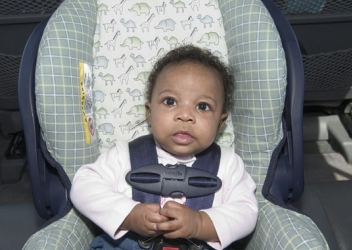Completed and Foundational Child Occupant Protection Projects
For more than two decades, CIRP has been conducting research to improve child occupant safety, inform vehicle design, and promote safe behaviors through public policy and education.
Key Completed and Foundational Research Projects
- Partners for Child Passenger Safety (PCPS)More
Partners for Child Passenger Safety was the world's largest child-focused motor vehicle crash surveillance system. Partners for Child Passenger Safety collected data on 875,000 children in crashes from 1998 to 2007. Dozens of publications led by the CIRP team used PCPS data to describe mechanisms of injury and restraint effectiveness for child passengers.
Principal Investigators: Flaura Winston, MD, PhD; Dennis Durbin, MD, MSCE
- Kinematic Response of Pediatric and Adult Human Volunteers to Automotive-Like Loading ConditionsMore
Researchers at CHOP collaborated with TK Holdings Inc. (Takata Corp.), Rowan University, and University of Virginia to develop the first low-speed human volunteer sled to test pediatric subjects.
Principal Investigators: Kristy Arbogast, PhD; Thomas Seacrist, MBE
- Boosting Restraint Norms Among At Risk GroupsMore
This community-based social marketing campaign was designed to promote booster seat use among at-risk populations. The campaign is steeped in Partners for Child Passenger Safety data, focus group testing of messages and interventions with parents of booster seat-aged children in both the US and Beijing, China.
Principal Investigator: Flaura K. Winston, MD, PhD
- National Child Occupant Special Study (NCOSS)More
In a series of pilot studies, CIRP researchers determined the appropriate methods of subject recruitment and data collection for a national child-focused supplemental crash data collection system.
Principal Investigators: Allison Curry, PhD, MPH; Dennis Durbin, MD, MSCE
- Evaluation of Reminder Technology to Prevent Pediatric Heat Stroke More
This study, funded by the National Highway Traffic Safety Administration, evaluated products designed to prevent children 0 to 24 months of age from being left behind accidentally in closed, parked vehicles, which could potentially lead to heat stroke.
Principal Investigator: Kristy Arbogast, PhD
Center for Child Injury Prevention Studies Projects
- Quantifying CRS Fit in Vehicle Seat Environment: Digitization ApproachMore
In this multi-year project, researchers developed a methodology for digitization of child restraint systems (CRS) using the Microsoft Xbox Kinect Sensor™. Virtual surrogates were created of nearly 290 commercially available CRS as of April 2016, allowing vehicle manufacturers to understand the breadth of CRS dimensions and take them into account when designing new vehicles.
Principal Investigator: Aditya Belwadi, PhD
- Quantifying Children’s Posture in the Rear Seat: A Naturalistic Study More
This line of research was a large multidisciplinary collaboration of engineers and behavioral scientists led by Australia’s Monash University to quantify differences between optimal posture and position of child occupants in the rear seat and actual position and posture through a large scale naturalistic study.
Principal Investigator: Kristy Arbogast, PhD
- Evaluation of Side Impacts with a Frontal Component for Children in Child Restraint SystemsMore
In collaboration with Medical College of Wisconsin, researchers examined the injury potential to a 3-year-old center- or far-side occupant in side-impact or oblique crashes. We explored the role of the tether and intrusion on kinematics and injury potential as well as the effect of various lower attachment methods to control head excursion.
Principal Investigator: Kristy Arbogast, PhD
- Determination of Pediatric Chest Stiffness Through Cardio Pulmonary Resuscitation (CPR)More
Leveraging a novel device used on children receiving chest compressions for CPR, researchers have quantified the chest's biomechanical response. A sensor that measures the force and magnitude of chest displacement during compressions provides data for calculating chest stiffness. This information can then be compared to the chests of crash test dummies to ensure that they are child-like.
Principal Investigator: Matthew R. Maltese, PhD







